Fermenting Beer with CellarScience Berlin Yeast
Published: July 22, 2025 at 9:41:10 PM UTC
Last updated: November 29, 2025 at 12:32:16 AM UTC
Homebrewing enthusiasts and professional brewers are constantly seeking the ideal lager yeast. They aim to enhance their beer fermentation process. A particular yeast strain has caught their attention. It is known for creating lagers with a soft malt character and balanced esters. This yeast strain has become a favorite among brewers. Its consistent performance and ability to ferment various wort conditions are key reasons. Whether you're an experienced brewer or new to the craft, understanding this yeast's characteristics and optimal conditions is vital. It can greatly improve the quality of your homebrewing.
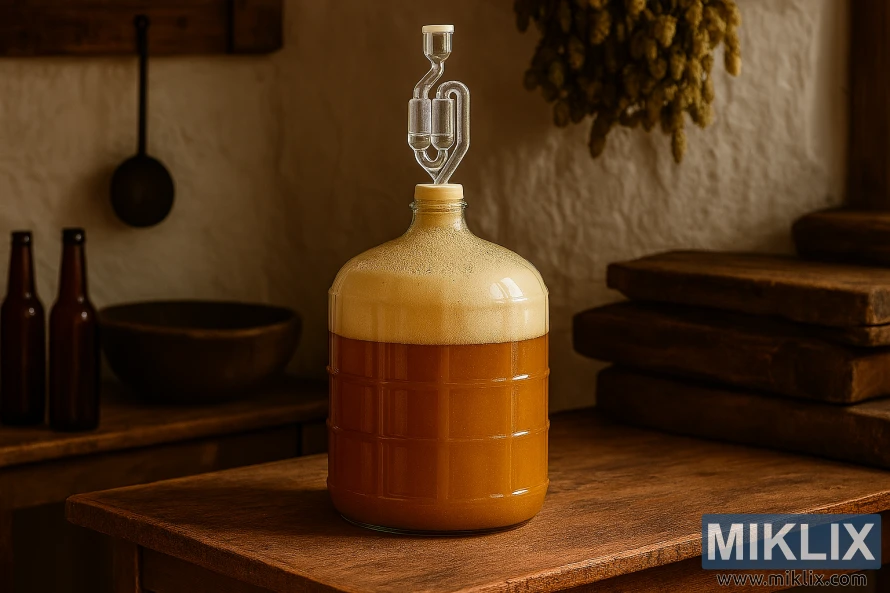
Key Takeaways
- Characteristics of the yeast strain used for fermenting lagers
- Optimal conditions for fermentation
- Flavor profile and performance in different wort conditions
- Tips for achieving the best results in homebrewing
- Common challenges and solutions when using this yeast strain
Understanding CellarScience Berlin Yeast
CellarScience Berlin Yeast has gained global acclaim for its contribution to lagers with a soft malt character and balanced esters. This yeast strain, deeply rooted in Berlin's brewing heritage, has become a favorite among brewers for its consistent performance.
The history of CellarScience Berlin Yeast is closely tied to the traditional brewing practices of Berlin. Its development is a testament to the city's long-standing brewing culture, which emphasizes quality and consistency. The yeast's lineage is key to understanding its unique characteristics and capabilities.
Key characteristics of CellarScience Berlin Yeast include its ability to produce lagers with a clean and crisp flavor profile. It is noted for its:
- Soft malt character
- Balanced esters
- Consistent fermentation performance
This yeast strain is a valuable addition to any brewer's toolkit, providing a reliable means of producing high-quality lagers. Its compatibility with various brewing supplies makes it a versatile choice for both homebrewers and professional brewers.
Technical Specifications and Optimal Conditions
Understanding the technical specifications and optimal conditions for CellarScience Berlin Yeast is key for successful beer fermentation. This yeast is designed for direct pitching, making the brewing process simpler for homebrewers.
The recommended dosage is two 12g sachets for a 5-6 gallon batch. This makes scaling your homebrew recipes easy. It ensures optimal fermentation and contributes to the consistent quality of your beer.
For optimal performance, it's essential to understand the ideal fermentation conditions. The ideal fermentation temperature range for CellarScience Berlin Yeast is between 48°F and 58°F. This is typical for lager yeast fermentation.
- Direct pitching capability simplifies the brewing process.
- Recommended dosage: two 12g sachets per 5-6 gallon batch.
- Ideal fermentation temperature: between 48°F and 58°F.
Rehydrating the yeast is not necessary due to its direct pitching design. Brewers should ensure that the wort is well-aerated to support healthy fermentation. Proper handling and storage before use are also critical to maintain yeast viability.
By following these guidelines, brewers can achieve optimal beer fermentation with CellarScience Berlin Yeast. This results in high-quality lager beers that meet the expectations of discerning palates.
Flavor Profile and Beer Styles
Lagers made with CellarScience Berlin Yeast are celebrated for their soft malt character and balanced esters. This yeast excels in crafting lagers with a clean, crisp taste. It's perfect for a variety of beer styles.
The yeast's contribution to a soft malt character results in a lager with a smooth, velvety texture. The balanced esters prevent the beer from becoming too fruity or complex. This keeps the beer refreshing, appealing to a wide range of drinkers.
Some of the key characteristics of lagers produced with CellarScience Berlin Yeast include:
- A soft, smooth malt character
- Balanced esters for a clean flavor profile
- Versatility in brewing a wide range of lager styles
This yeast is ideal for brewing traditional German lagers like Pilsners and Oktoberfest beers. It's also great for modern craft lager styles. Its consistent, high-quality results make it a valuable asset for brewers, whether at home or in commercial operations.
By using CellarScience Berlin Yeast, brewers can craft a diverse range of lagers. These lagers can meet different tastes and preferences. This approach helps maintain quality standards in today's competitive brewing world.
Temperature Requirements and Fermentation Range
Fermentation temperature is key to the quality of beer when using CellarScience Berlin Yeast. The best temperature for this yeast is between 50-59°F (10-15°C). This range is typical for lager yeast fermentation.
Keeping the ideal temperature is vital for the flavor profile in your homebrew recipes. Temperatures that are too high or too low can cause off-flavors. This affects the overall quality of the beer.
During fermentation, yeast metabolism is influenced by temperature. This impacts the production of esters, aldehydes, and other compounds. These compounds contribute to the beer's flavor and aroma. By controlling the fermentation temperature, brewers can optimize CellarScience Berlin Yeast's performance. This results in high-quality lagers.
- Optimal fermentation temperature: 50-59°F (10-15°C)
- Typical fermentation characteristics of lager yeast
- Importance of temperature control for homebrew recipes
Understanding the temperature needs for CellarScience Berlin Yeast helps brewers manage the fermentation process better. This leads to consistent results in their brewing endeavors.
Pitch Rate Recommendations
The pitch rate is a critical factor in achieving optimal fermentation outcomes with CellarScience Berlin Yeast. A proper pitch rate ensures that the yeast can efficiently ferment the wort. This results in the desired flavor and character of the beer.
CellarScience Berlin Yeast can be directly pitched or rehydrated before addition to the wort. For optimal results, a pitch rate of 1.8 grams per liter is recommended. This rate helps in achieving a healthy fermentation and minimizing the risk of under or over-pitching.
For homebrewers using CellarScience Berlin Yeast, following the recommended pitch rate is essential. It ensures consistent and high-quality brews. Ensuring the correct amount of yeast is pitched significantly impacts the fermentation process and the final product's quality.
Brewing supplies, including accurate scales and rehydration equipment, are vital. They help in achieving the precise pitch rate. By following these guidelines, brewers can optimize their use of CellarScience yeast for homebrewing projects.
Handling and Storage Requirements
Proper handling and storage of CellarScience Berlin Yeast are critical for its viability and performance in beer fermentation.
The yeast must be stored in a cool, dry place to maintain its potency. This storage condition is vital for preserving the yeast's effectiveness in various homebrew recipes.
Here are some key guidelines for handling and storing CellarScience Berlin Yeast:
- Store the yeast in a cool, dry environment.
- Avoid exposure to direct sunlight and moisture.
- Keep the yeast away from strong-smelling substances, as it can absorb odors.
When stored correctly, CellarScience Berlin Yeast has a shelf life of up to 2 years. It's essential to check the packaging for specific storage instructions and expiration dates.
By following these handling and storage recommendations, brewers can ensure that their CellarScience Berlin Yeast remains healthy and effective for optimal beer fermentation results.
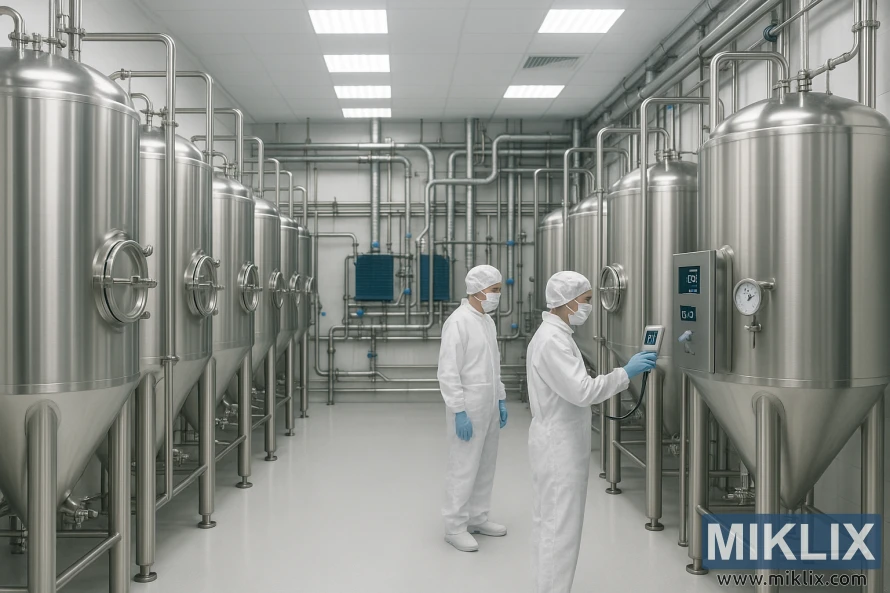
Performance in Different Wort Conditions
The versatility of CellarScience Berlin Yeast is evident in its ability to thrive in different wort conditions. This includes varying gravity and temperature.
CellarScience Berlin Yeast is known for its robust performance across a range of brewing supplies and homebrewing setups. Its ability to adapt to different wort conditions makes it a valuable asset for brewers.
- Handling varying gravity levels without compromising fermentation quality
- Thriving in different temperature ranges, making it suitable for various brewing environments
- Producing consistent flavor profiles across different wort conditions
When brewing with CellarScience Berlin Yeast, brewers can expect:
- Reliable fermentation outcomes even in challenging wort conditions
- Flexibility in brewing techniques, allowing for experimentation with different recipes and conditions
- High-quality beer with characteristic flavor profiles associated with CellarScience yeast
Overall, CellarScience Berlin Yeast is a reliable choice for brewers looking to achieve consistent results in various brewing conditions.
Comparative Analysis with Similar Yeasts
In the realm of beer fermentation, grasping the subtleties between yeast strains like CellarScience Berlin Yeast and others is essential. This knowledge greatly influences the final product's taste and quality.
CellarScience Berlin Yeast is frequently compared to Fermentis S-23, with some brewers speculating it might be a rebranded version. Despite both being used for lager fermentation, they exhibit distinct performance and flavor profiles.
Here are some key similarities and differences between CellarScience Berlin Yeast and Fermentis S-23:
- Both yeasts are suitable for lager fermentation at cold temperatures.
- CellarScience Berlin Yeast is known for its clean fermentation profile, similar to Fermentis S-23.
- Fermentis S-23 is a more established strain, widely used in the brewing industry.
- Some brewers report that CellarScience Berlin Yeast produces a slightly fruitier flavor profile compared to Fermentis S-23.
- The pitch rate recommendations for both yeasts are similar, making them interchangeable in many recipes.
When deciding between CellarScience Berlin Yeast and Fermentis S-23 for homebrew recipes, brewers should weigh their specific needs and the beer style they aim to brew. Fermentis S-23 might be the better choice for those seeking a traditional lager taste. Yet, CellarScience Berlin Yeast is an excellent option for brewers looking to explore unique flavor profiles.
In conclusion, while CellarScience Berlin Yeast and Fermentis S-23 share many similarities, their differences can significantly impact the final product in beer fermentation. By understanding these nuances, brewers can make more informed decisions about which yeast to use for their lager yeast fermentation needs.
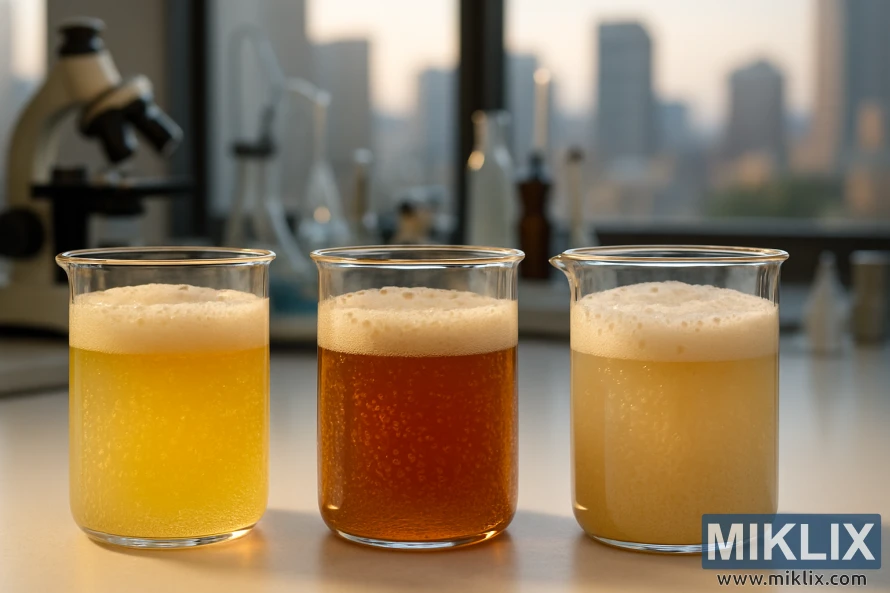
Cost-Benefit Analysis
Evaluating the cost-benefit of yeast strains is essential for homebrewers on a budget. The choice of yeast can significantly impact brewing costs. CellarScience Berlin Yeast is generally priced lower than Fermentis S-23, making it a more affordable option for homebrewers.
When considering brewing supplies, the cost of yeast is just one factor. Yet, it's an essential one, more so for those who brew frequently. The affordability of CellarScience Berlin Yeast does not compromise quality. It offers a reliable fermentation profile, vital for producing high-quality beer.
In a cost-benefit analysis, several factors are considered. These include the initial cost of the yeast, the quantity required for each brew, and the overall performance during fermentation. CellarScience Berlin Yeast excels in these areas, providing a competitive price point and efficient fermentation.
- Initial cost: Lower than Fermentis S-23
- Quantity required: Standard pitch rates apply
- Fermentation performance: Consistent and reliable
For homebrewers, the value proposition of CellarScience Berlin Yeast is clear. It offers a balance of affordability and performance, making it an attractive choice for those looking to brew high-quality beer without excessive costs. As the homebrewing community grows, yeast strains like CellarScience Berlin Yeast will play a vital role in its development.
Real-World Brewing Results
CellarScience Berlin Yeast has become a top pick for brewers aiming for top-notch fermentation in their homebrews. Many have shared their positive experiences, highlighting its simplicity and consistent performance.
In various brewing scenarios, CellarScience Berlin Yeast shines. For example, those brewing lagers have seen better fermentation and beer quality.
- Consistent fermentation performance
- Enhanced flavor profiles in the finished beer
- Ease of handling and pitching
These real-world results show CellarScience Berlin Yeast's power to boost beer quality. It's a game-changer for both homebrewers and commercial breweries. By using this yeast, brewers can count on more reliable and superior fermentation, meeting their recipe and lager yeast needs.
As brewers keep exploring different yeast strains, the praise for CellarScience Berlin Yeast grows. It's a key player in the brewing world, helping craft exceptional lagers and other beer styles.
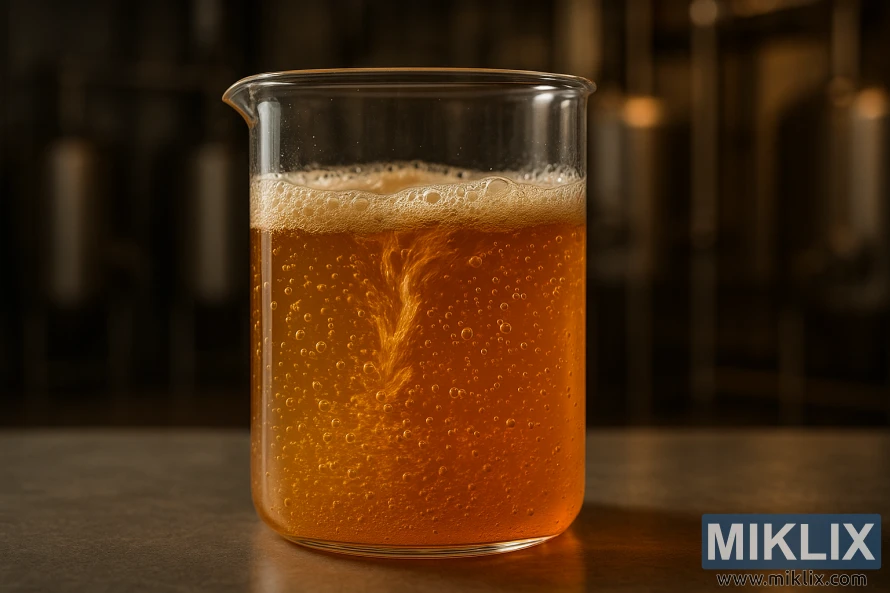
Troubleshooting Common Issues
To achieve the best results with CellarScience Berlin Yeast, it's essential to understand and troubleshoot common problems. These issues can arise during the brewing process.
Common problems include slow fermentation, off-flavors, and poor attenuation. Let's explore these challenges and some practical solutions.
Slow fermentation can stem from several factors. These include incorrect pitching rates, inadequate nutrient supply, or unfavorable temperature conditions. Following the recommended pitch rate and maintaining optimal temperature ranges can significantly improve fermentation performance.
- Verify the pitching rate and adjust according to the manufacturer's guidelines.
- Check the wort's nutrient profile and consider adding yeast nutrients if necessary.
- Monitor fermentation temperature closely to stay within the recommended range for CellarScience Berlin Yeast.
Off-flavors can result from contamination, improper handling, or stress on the yeast. To mitigate this, maintain a clean brewing environment, handle the yeast gently, and avoid stressing the yeast with extreme temperatures or nutrient deficiencies.
- Sanitize all equipment thoroughly to prevent contamination.
- Handle yeast with care to avoid damaging the cells.
- Ensure the wort is well-nourished to support healthy yeast metabolism.
Poor attenuation can be due to factors like inadequate yeast health, insufficient fermentation time, or wort composition. Ensuring healthy yeast and providing adequate time for fermentation can help achieve the desired attenuation.
By addressing these common issues, brewers can optimize their use of CellarScience Berlin Yeast and produce high-quality beers. For homebrewers and commercial brewers alike, understanding how to troubleshoot these challenges is key to successful brewing.
Tips for Optimal Fermentation
For successful fermentation with CellarScience Berlin Yeast, brewers must balance temperature, pitch rate, and wort conditions. Achieving the best results requires careful control of these factors.
Temperature control is key during fermentation. Lager yeast thrives in a consistent temperature range of 48°F to 58°F. This range is critical for efficient fermentation and the production of desired flavor compounds.
Optimizing the pitch rate is also essential. The recommended pitch rate for CellarScience Berlin Yeast varies based on the product and brewing conditions. Typically, a pitch rate of 1-2 million cells per milliliter per degree Plato is advised.
Wort preparation plays a significant role in optimal fermentation. It's vital to ensure the wort is well-aerated and has the necessary nutrients for yeast growth and fermentation. Brewers can enhance fermentation by using homebrew recipes with yeast nutrients.
- Monitor temperature closely to maintain optimal conditions.
- Adjust pitch rate according to yeast product guidelines.
- Ensure proper wort aeration and nutrient levels.
Packaging and Viability Statistics
CellarScience Berlin Yeast is packaged with utmost care to ensure its viability and performance. This is vital for brewers, whether they are professionals or homebrewing enthusiasts. The packaging and viability of yeast are key to the success of brewing supplies.
Available in 12g sachets, CellarScience Berlin Yeast is designed to preserve its viability. This format is convenient for both small-scale homebrewing and larger commercial brewing operations.
The viability of CellarScience Berlin Yeast is guaranteed to be 90% or higher. This ensures brewers can achieve consistent and high-quality fermentation results. The high viability rate reflects the quality of the yeast and its packaging.
- Packaging format: 12g sachets
- Guaranteed viability: 90% or higher
- Suitable for homebrewing and commercial brewing supplies
By choosing CellarScience Berlin Yeast, brewers can trust in a high-quality yeast product. It will consistently perform, batch after batch. This reliability is essential for both homebrewers and professional brewers who rely on CellarScience yeast for their brewing needs.
Conclusion
CellarScience Berlin Yeast stands out as a reliable and versatile option for brewers. It excels in a variety of brewing scenarios, from lagers to homebrew recipes. Its ability to thrive in different wort conditions and temperature ranges is a significant advantage. This makes it a go-to choice for brewers aiming for consistent fermentation results.
The yeast's clean flavor profile and compatibility with diverse beer styles make it ideal for experimenting with new recipes. Whether you're an experienced brewer or just beginning, CellarScience Berlin Yeast provides a solid and predictable fermentation experience. This is a key benefit for brewers looking to refine their craft.
Understanding the technical specifications, handling requirements, and performance of CellarScience Berlin Yeast is essential. This knowledge empowers brewers to make informed decisions about its use. Given its proven adaptability, this yeast is well-suited for both homebrewers and commercial breweries. It meets the demands of a wide range of brewing needs.
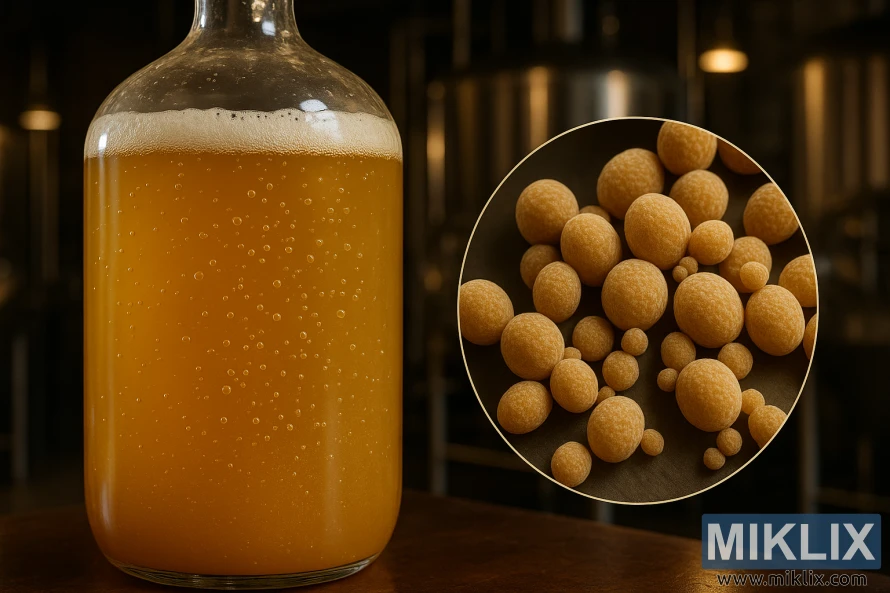
Further Reading
If you enjoyed this post, you may also like these suggestions:
- Fermenting Beer with White Labs WLP850 Copenhagen Lager Yeast
- Fermenting Beer with Mangrove Jack's M29 French Saison Yeast
- Fermenting Beer with White Labs WLP066 London Fog Ale Yeast
